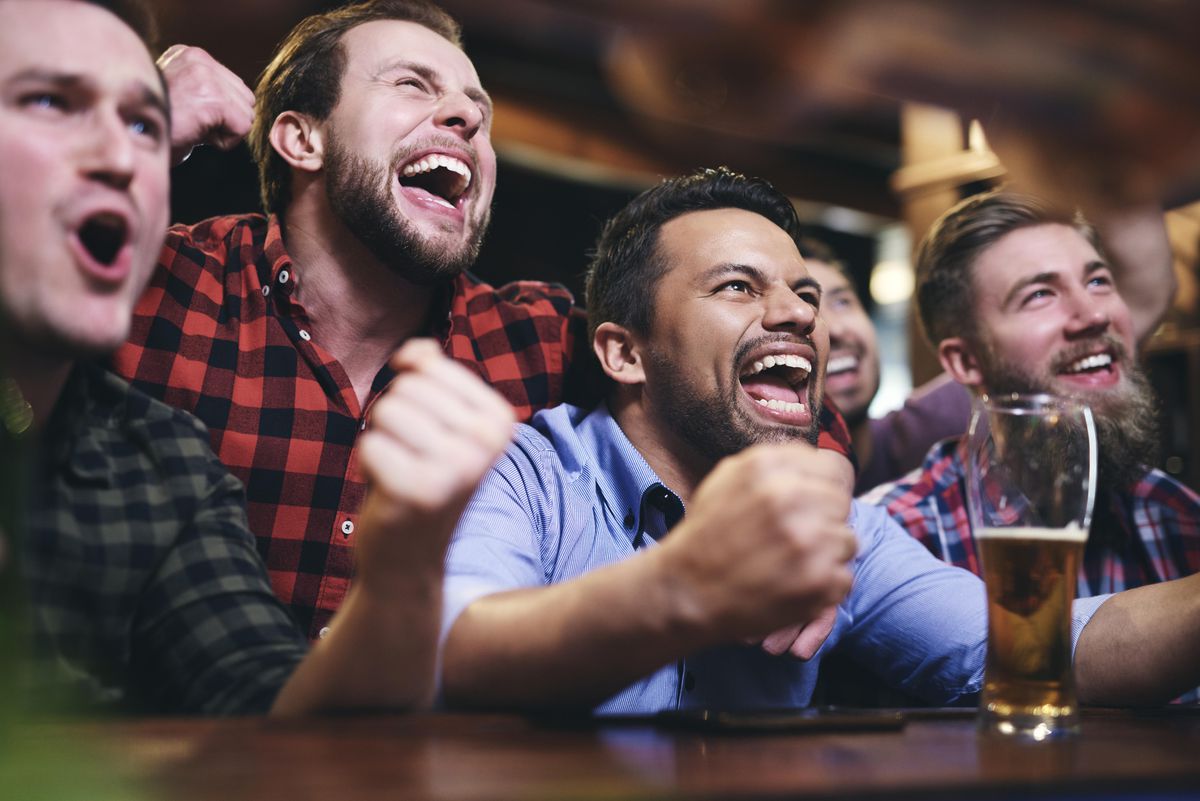
On Sunday, millions of people across the country will tune in for Super Bowl LV. Whether or not this … [+]
getty
I’ve previously discussed the likelihood that the Super Bowl may be a “super spreader” of Covid-19 . Now, the CDC and Dr. Anthony Fauci are also warning people not to go to Super Bowl parties.
Just how many people could be exposed is staggering. I estimate that it could be between 2.3 million and 7 million. Here’s my logic.
The key unknown is how many people in the country are currently incubating infection. The University of Georgia’s Coronavirus Working Group nowcasting algorithm estimates that there are currently about 4.5 million latent infections in the country. This does not account for the recent downturn in the number of cases. So we can consider it an upper bound.
We estimate a lower bound as follows. Right now, the country is recording about 130 thousand new cases per day. If things continue on the downward trajectory, on Super Bowl Sunday, there may be more like 125 thousand cases per day. With an incubation period of around 5 days, that means there are currently about 625 thousand (125,000 × 5) infected people who will eventually be diagnosed. We don’t currently know our detection rate, but we are probably detecting around 1 out of every 3 or 4 infections. The best-case scenario is 1 in 2. That means there could be as few as 1.25 million (125,000 × 5 × 2) latent infections on game day.
Taken together, these arguments suggest that on Super Bowl Sunday there will be somewhere between 1.25 million and 4.5 million people with latent infections in the US. With approximately 330m people in the US, that works out to between 0.4% and 1.3% of the US population.
Last year, 100m people watched the game. Let’s suppose we have the same number this year, and on average there are eight people at a gathering. That’s 12.5 million parties. The chance that your party of 8 has one or more SARS-CoV-2 carriers is between 3% and 10%:
Minimum chance your party of 8 has a carrier: 100% – (100% – 0.4%)8 = 3.2%
Maximum chance your party of 8 has a carrier: 100% – (100% – 1.3%)8 = 9.9%
But, how many susceptible people will there be at each party? The susceptibles are those who have not already been infected AND are not incubating an infection now. We’re currently estimating that there have been around 90 million infections among a total population of 330 million, leaving 240 million that remain susceptible. If we subtract the lower bound (1.25 million) and upper bound (4.5 million) on the number of latent infections, we conclude that between 235.5 million and 238.8 million people, or between 71.4% and 72.3% of the population, remain susceptible.
Thus, at each of these parties, there will be around 5 susceptible people:
Susceptibles at your party of 8, with one carrier: (8-1) × (~72%) ≈ 5
To estimate the total number of people who could be exposed as a result of Super Bowl parties, we multiply the number of susceptibles among the 100 million viewers by their average chance of exposure. Since we have an even hundred million viewers, our susceptible fraction of 71.4% to 72.3% of the population means that between 71.4 million and 72.3 million Super Bowl viewers will be susceptible. Each susceptible has between a 3.2% and 9.9% chance of being exposed, so we calculate as follows:
Total number of Super Bowl exposures = Number of susceptibles × Chance of exposure
Translating into numbers, we have:
Total number of Super Bowl exposures (lower bound):
(330m – 90m – 1.25m) / 330m × 100m × 3.2% = 72.3m × 3.2% ≈ 2.3m
Total number of Super Bowl exposures (upper bound):
(330m – 90m – 4.5m) / 330m × 100m × 9.9% = 71.4m × 9.9% ≈ 7.0m
Thus, we expect the number of Super Bowl exposures may range from 2.3 million to 7 million.
So, what if people stay home? On January 27, a Seton Hall University sports poll reported that 64% of surveyed respondents indicated that they do not plan to attend a Super Bowl party with someone who lives outside of their home. If this happens, the total number of Super Bowl exposures would drop proportionally. If only 36% of the football fans who plan to watch the game go to a party, we would expect only 36% of the exposures. If this many people indeed stay home, we expect from 828,000 to 2.5 million Super Bowl watchers to be exposed. This is a lot less than 7 million. But, it is still a very, very large number as far as the epidemic is concerned.
There are, of course, some qualifications to this calculation. There is uncertainty in our estimate of the number of people that remain susceptible. We haven’t accounted for the fact that cases are probably clustered, and so not randomly distributed among Super Bowl parties. Finally, we don’t account for the effect of vaccinations. Currently, more than 27 million people (8.1%) of the population have received at least one dose, although only 6 million people (1.8% of the population) have been fully vaccinated. Although six million is a large number, because it is a small percentage it would not greatly affect our calculations.
One final point to remember. This calculation concerns Super Bowl exposures due to attending a party. When the game is over, the partiers will go home and the pandemic will continue. America must not let this be the occasion that loses all the hard-fought gains of recent weeks.
This article is auto-generated by Algorithm Source: www.forbes.com


